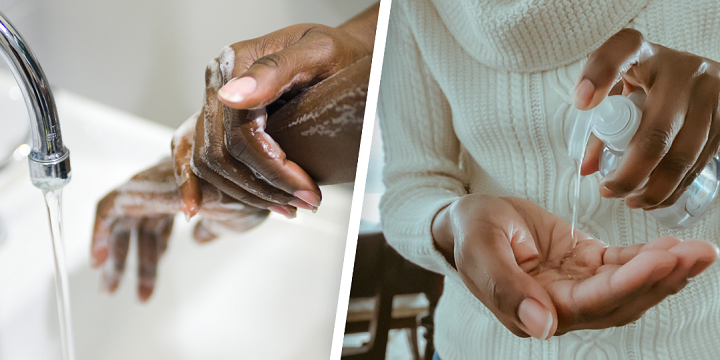World Hand Hygiene Day aims to maintain the global promotion, visibility and sustainability of hand hygiene in health care and to bring people together to support hand hygiene improvement around the world! It was launched in 2009 and is celebrated annually on May 5.
Hand hygiene is one of the most effective actions you can take to reduce the spread of pathogens and prevent infections, including the COVID-19 virus. Hospital staff, patients, families, and visitors can play a critical role in fighting COVID-19 and other infections by adopting frequent hand hygiene as part of their day-to-day practices.
You should clean your hands often but there are four key moments when hand hygiene is critical, especially if you are visiting or taking care of someone who is sick.

1. Before you touch a patient or leave a patient care area
Clean your hands before:
- Entering a patient room, waiting room, or clinic area
- Entering a kitchen, lounge, gym, playroom, or other shared area
2. Before you put anything into someone's body
Clean your hands before:
- Eating or feeding someone (including breastfeeding)
- Taking or giving medication
3. After you touch body fluid
Clean your hands after:
- Using the toilet or commode
- Changing a diaper or incontinence pad
- Blowing your nose
4. After you touch a patient or leave a patient care area
Clean your hands after:
- Leaving a patient room, waiting room, or clinic area
- Leaving a kitchen, lounge, gym, playroom, or other shared area
No – both will clean your hands so use whichever is available to you! In health care settings, hand sanitizer is almost always the best choice. Hand sanitizer is less harsh on the skin because it contains emollients, kills germs on contact and is readily available. Soap and water should be used if hands are visibly dirty.

Learn about how you can save lives by cleaning your hands in this World Health Organization infographic.
Challenge your hand hygiene knowledge with this Jeopardy-themed hand hygiene game.
Be Germ Smart! Read this hand hygiene refresher on how to use gloves to prevent the spread of germs. Don't forget: wearing gloves does not replace the need for hand hygiene.
Every day is a good day to pay attention to hand hygiene. The IPAC team shares their favourite tips below.
“Put hand sanitizer in a prominent  place in your house or in your office, so it’s the first thing you do when you get home or back to your desk. My family keeps it on the island in the middle of our kitchen, so it’s the first thing we see when we walk in the door at home.” – Kristie
place in your house or in your office, so it’s the first thing you do when you get home or back to your desk. My family keeps it on the island in the middle of our kitchen, so it’s the first thing we see when we walk in the door at home.” – Kristie
"At home, up the cool factor! There are lots of great new bottles of hand sanitizer being sold everywhere now with funky designs. And look after your hands with moisturizers after washing. Take care of them. And carry hand sanitizer with you wherever you go! "– Janie
are lots of great new bottles of hand sanitizer being sold everywhere now with funky designs. And look after your hands with moisturizers after washing. Take care of them. And carry hand sanitizer with you wherever you go! "– Janie
"Strike a balance outside of health  care. Wash or clean your hands as soon as you think about it, but don't stress if you've forgotten or think you've rubbed your eyes or nose before you've done it. We're living in a strange time and our mental health is still very important. Try to maintain a good balance of practicing good hand hygiene habits and not going too overboard." – Michelle
care. Wash or clean your hands as soon as you think about it, but don't stress if you've forgotten or think you've rubbed your eyes or nose before you've done it. We're living in a strange time and our mental health is still very important. Try to maintain a good balance of practicing good hand hygiene habits and not going too overboard." – Michelle
"Please, please practice hand  hygiene before taking off your mask! Wash your hands first, then remove your mask." – Carole
hygiene before taking off your mask! Wash your hands first, then remove your mask." – Carole
For more information about World Hand Hygiene Day, visit https://www.who.int/campaigns/world-hand-hygiene-day/2021.
